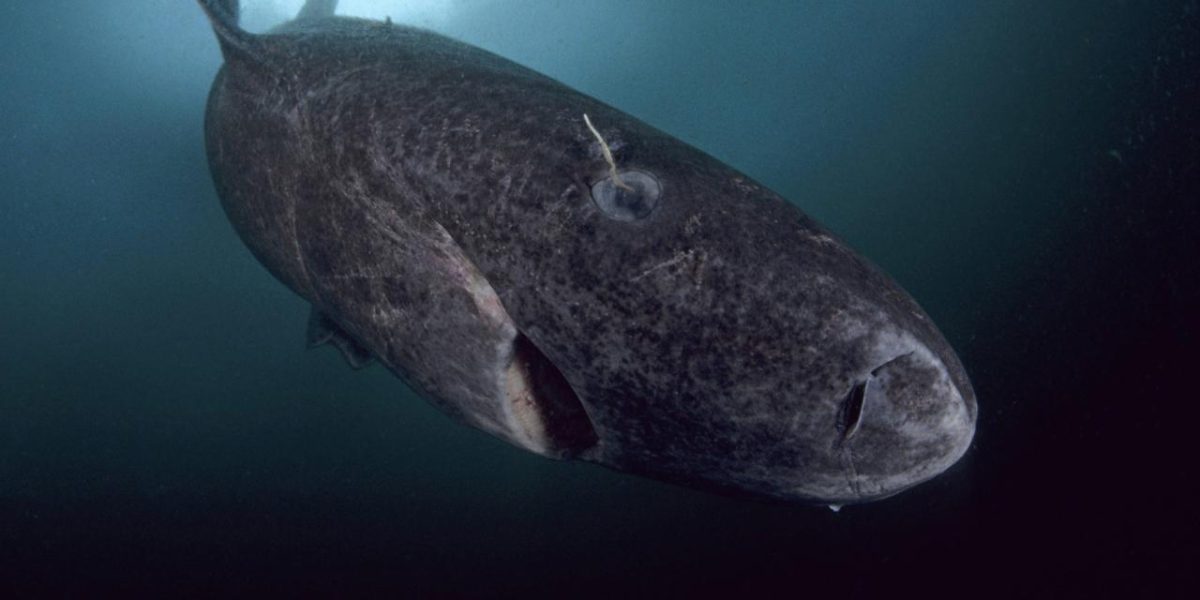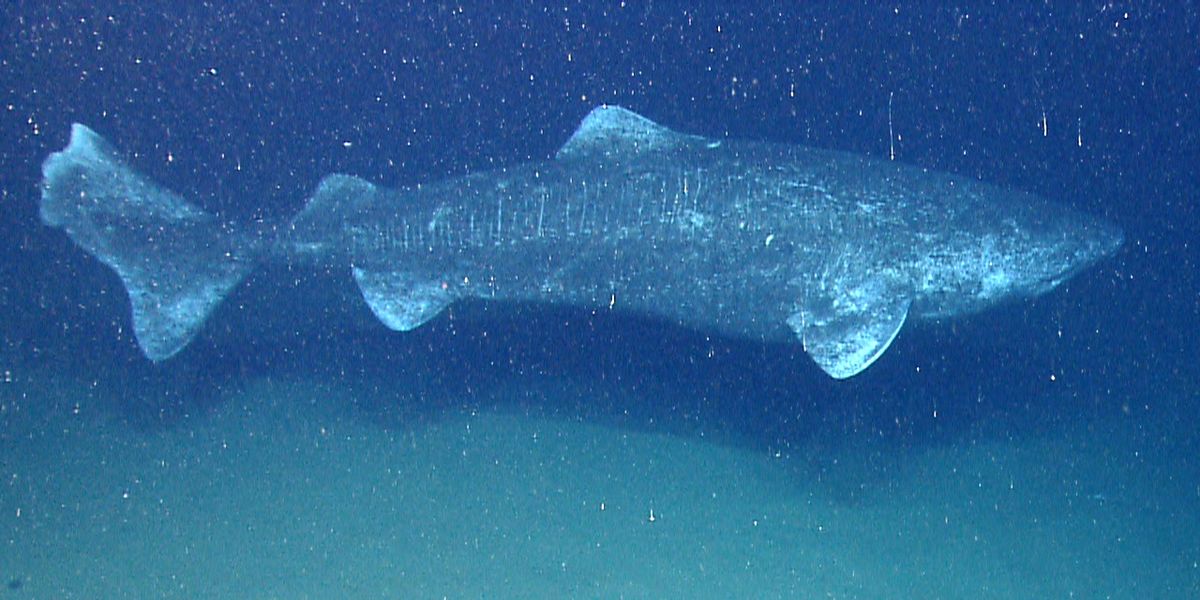An investigation published last year in the Journal, Science revealed the extraordinary longevity of Greenland sharks. Because of the study, scientists now say that the sharks are the longest living vertebrates on Earth. A feature published in the New Yorker magazine also reveals some new details that backup this incredible hypothesis.

A Greenland shark, Somniosus microcephalus (Credit: Photoshot Holdings Ltd / Alamy)
“We tend to think of vertebrates as living about as long as we do, give or take 50 to 100 years. Marine species are likely to be very long-lived,” said the paper published in Science. “but determining their age is particularly difficult. Nielsen et al. used the pulse of carbon-14 produced by nuclear tests in the 1950s—specifically, its incorporation into the eye during development—to determine the age of Greenland sharks.”
Willard Libby invented carbon dating in the late 1940s and it’s now an omnipresent tool for researchers, scientists, and archaeologists in help determining the age of what they are studying. Radiocarbon is generated in Earth’s atmosphere by the collision of cosmic rays and nitrogen.
What’s produced in the aftermath then combines with the atmosphere’s oxygen to form radioactive carbon dioxide which if you remember learning about photosynthesis in grade school, makes its way into plants and trees.

A Greenland Shark (Wikimedia)
This is a constant exchange of some amounts of radiocarbon and when an animal eats these plants, they become part of that process. When the animal dies, the radiocarbon left in their bodies decays at a universal rate. This is how scientists can measure how old something is in the natural world. For example: Greenland sharks.
University of Copenhagen Marine Biologist Julie Neilsen was the lead author of the paper published in the Journal Science titled Eye lens radiocarbon reveals centuries of longevity in the Greenland shark.
“We had our expectations that we were dealing with an unusual animal,” Neilsen said. “but I think everyone doing this research was very surprised to learn the sharks were as old as they were.”
The oldest animal on Earth (non-vertebrate) was thought to be a clam named Ming whose estimated age is 507 years old. But according to a new feature published in the New Yorker, in which they “swim” with these almost ancient sharks, one them may be nearly 512 years old.
Scientists estimate that one sixteen-foot-long Greenland shark has been alive for as long as five hundred and twelve years. pic.twitter.com/GFyiE3AXjn
— The New Yorker (@NewYorker) November 27, 2017
Here’s an excerpt diving into how scientists determined the ages of Greenland sharks. We highly recommend you read the New Yorker piece linked here.
Nielsen and his collaborators published their results in August of last year. Using Heinemeier’s method, they found that the smallest of the sharks they caught—those around seven feet long—were born after the bomb pulse, while the largest animals were born well before it. With the help of a mathematical model that linked size with age, they estimated that one sixteen-foot female was at least two hundred and seventy-two years old, and possibly as much as five hundred and twelve years old. Because it is difficult to establish background carbon-14 levels in the ocean, and because Nielsen and his colleagues didn’t know which part of the ocean the sharks had been born in, the figure was inexact. Still, it firmly established Greenland sharks as the longest-living vertebrates on Earth. In theory, the biggest ones could be nearly six centuries old.
WHOA.








